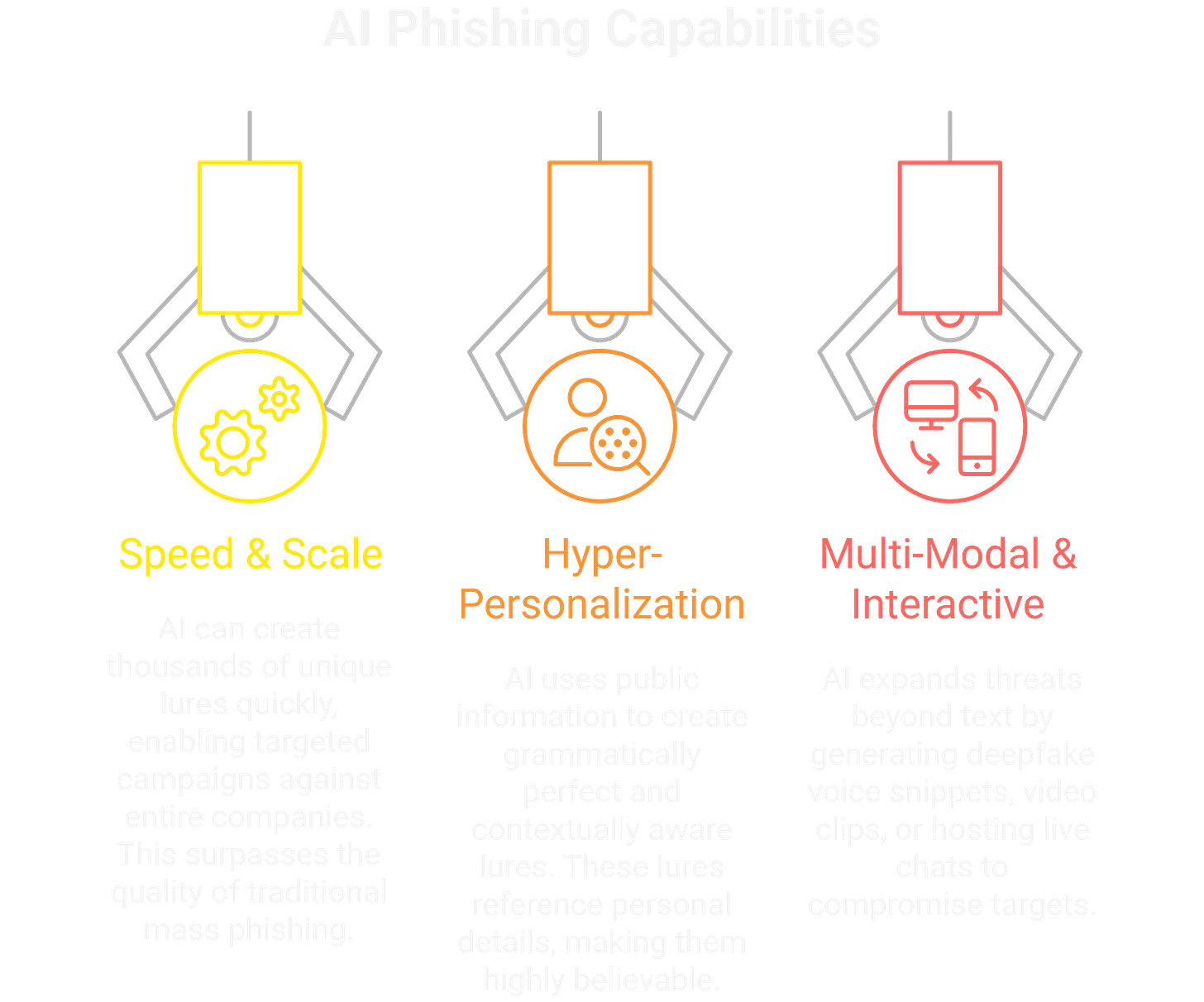AI-Powered Phishing: You Will Fall for This
How AI-powered social engineering, deepfake vishing, and machine-speed OSINT are breaking traditional email security. A defender's guide.
TL;DR: That gut feeling you get from a weird email? It’s about to fail you. AI is now crafting perfect lures that know your colleagues’ names, your last project, and even your CEO’s voice. We’re entering an era of industrialized social engineering.
We spent years training people to spot a phish with bad grammar. The AI spent a weekend learning to mimic your entire org chart.
Why Does AI Phishing Feel So Different?
For years, social engineering was an artisanal, manual-labor job. Attackers spent serious time crafting one pretext that was just good enough to work. That’s all changing. Large Language Models (LLMs) are both fixing grammar in templates and acting as engines for industrializing the entire attack chain.
This is a fundamental change in speed, scale, and sophistication.
Speed & Scale: An AI can spit out thousands of unique, personalized lures in the time it takes a human to write one. This lets attackers run highly targeted campaigns against entire companies at once, without the shoddy quality of old-school mass phishing.
Hyper-Personalization: Hooked into public info (OSINT), an LLM can craft lures that are grammatically perfect and contextually aware. It can reference your latest project, a colleague’s name, or a recent company announcement, making the whole thing alarmingly believable.
Multi-Modal & Interactive: The threat now expands beyond text. AI can generate deepfake voice snippets for vishing calls, short video clips of the “CEO,” or even host a live chat to walk you through getting compromised.
The old, telltale signs of a phish are disappearing because the AI sounds like you, understands your company’s context, and can handle pushback in real time.
(Note: The techniques here are for authorized security testing and defensive research only. We’re here to arm defenders, not help attackers.)
What Does an AI-Driven Attack Actually Want?
To beat these attacks, you have to think like the attacker. This approach favors clean, precise operations with clear goals, not just mass email spraying.
An attacker using these methods is after a few key prizes:
Credential/Session Theft: The classic smash-and-grab for usernames, passwords, and active session tokens to get a foothold.
Wire Fraud / BEC: Posing as an executive or vendor to trick someone in Finance into sending money where it shouldn’t go.
OAuth Over-Permissioning: Fooling users into giving a shady app way too many permissions to their cloud accounts (like “Read/Write all your files”).
Targeted Data Exfiltration: Talking a user into uploading sensitive files to a fake portal or running a script that pulls data from their machine.
Good social engineering has always been built on good intel. AI just takes this from a slow, manual process to lightning-fast, automated intel gathering. It can scrape and connect dots from LinkedIn, press releases, and news to build a “persona graph” of your org. It figures out who reports to whom, who trusts whom, and who has the keys to the kingdom.
It can even mimic style, reading public blog posts or talks to copy a person’s unique tone. The most advanced move is feeding the AI a “context pack” of public support docs or annual reports so it can learn your company’s internal lingo.
If this teardown is opening your eyes, share it with your security team.
How Do They Bypass Both Humans and Tech?
This is where it gets scary. The AI forges content and delivers it across channels where users feel safe and their guard is down.
Think beyond email. The attack now shows up in:
Slack/Teams: High-trust zones where people are trained to click links from “colleagues.”
Jira/ServiceNow: The perfect place to impersonate IT support and ask for credentials or push a malicious “update.”
Calendar Invites: A malicious link tucked into an invite for an “Urgent QBR,” using time pressure as a weapon.
The real game-changer is layering different media to make the attack hit from multiple angles. The target might get a quick, AI-generated deepfake voicemail from the “CFO” before the fake invoice email arrives, pre-loading the social engineering.
The most dangerous part is interactive “ChatOps Phishing.” After the click, the user lands in a chat with a “support bot” that’s ready to help them get compromised. It can patiently talk them through approving an MFA push, installing a malicious app, or navigating a tricky SSO login, handling their questions the whole time.
This isn’t about brute-forcing tech. Instead of blasting a user with MFA push notifications, the attacker coordinates a single prompt with a live vishing call: “Hi, this is Mark from IT. I’ve sent the final approval to your phone so I can close the ticket.” The well-timed, context-aware ask turns a denial into a compliant tap.
Get practical, no-hype security analysis like this sent straight to your inbox.
So, How Do We Actually Fight This?
Fighting industrialized social engineering requires a layered defense. Signature-based detection is dead; AI can write infinite variations. The good news is, we have the home-field advantage.
1. People
Just-in-Time Micro-Drills: Ditch the boring annual training. Use AI-generated formats for frequent, realistic drills. Give immediate, helpful feedback.
Establish Clear Policies: Make it crystal clear “how IT/Finance contacts you.” If IT never asks for a password in chat and Finance always requires a video call to change payment info, you give people a simple out.
2. Process
Out-of-Band Verification: This is a non-negotiable for big requests. Anything involving money or new access must be confirmed on a separate channel (like a phone call to a known, saved number).
Phish-to-Report Hotkey: Make reporting easy. A one-click button in your email or chat client that sends the message straight to security is the best way to turn every employee into a sensor.
3. Technology
Harden the Mail Gateway: Enforce SPF/DKIM/DMARC with a
p=rejectpolicy. This shuts down simple domain spoofing.Go Phish-Resistant: This is your best technical defense. Move to phish-resistant MFA, like FIDO2/passkeys. Because they are tied to a specific domain, they simply don’t work on a fake login page, no matter how convincing it is.
Lock Down OAuth: Severely limit or block users from approving third-party OAuth apps. Keep a tight allowlist and regularly check consent logs.
Detect Behavior, Not Text: Focus on behavioral anomalies. Look for impossible travel, logins from strange ASNs, new email forwarding rules, or an external sender suddenly hijacking an internal email thread.
Why Your Old Playbook Is Broken
The introduction of AI marks a fundamental shift. Phishing is no longer a game of crafting a single, static lure. Now it’s about orchestrating a dynamic, automated campaign.
Relying on text analysis and static blocklists is a losing strategy. The counterplay must be equally dynamic. This starts with creating a resilient human firewall through realistic, continuous training and clear policies. It requires hardening processes with out-of-band verification for critical actions.
Most importantly, it demands a shift in technology: away from phishable credentials and toward truly phish-resistant MFA, behavioral-based detection, and a security posture that is prepared to identify and respond to the process of an attack, not just its payload.
What’s the most surprisingly realistic AI-generated lure (email, voice, or chat) you’ve seen in the wild or in a red team test? Drop your tactics and war stories in the comments.
Frequently Asked Questions
What is AI-powered social engineering? AI-powered social engineering is the use of Large Language Models (LLMs) and generative AI to automate and scale attacks. This includes creating thousands of hyper-personalized phishing emails, generating deepfake voice or video, and even running interactive chatbots to trick victims into giving up credentials, approving MFA, or sending money.
How is AI phishing different from regular phishing? Regular phishing relies on generic, mass-mailed templates that often have errors. AI phishing is highly personalized (using names, projects, and context from public info), grammatically perfect, and can be multi-modal (e.g., a voice message and an email). It’s harder to spot because it feels real.
What is the best defense against AI-powered phishing? There is no single defense. The best strategy is a layered defense: 1) Technology: Use phish-resistant MFA like FIDO2/passkeys. 2) Process: Enforce out-of-band verification for all financial or access requests. 3) People: Run frequent, realistic training drills and make reporting suspicious messages easy.
What is “ChatOps Phishing”? This is an advanced attack where, after a victim clicks a link, they land in a live chat with an AI bot impersonating IT or support. This bot can interactively handle objections and patiently walk the victim through the compromise, such as convincing them to approve an MFA prompt or install malicious software.








Have any of you been the target of AI phishing yet? I wonder, would you even know?
Great essential advancements for the good 😊